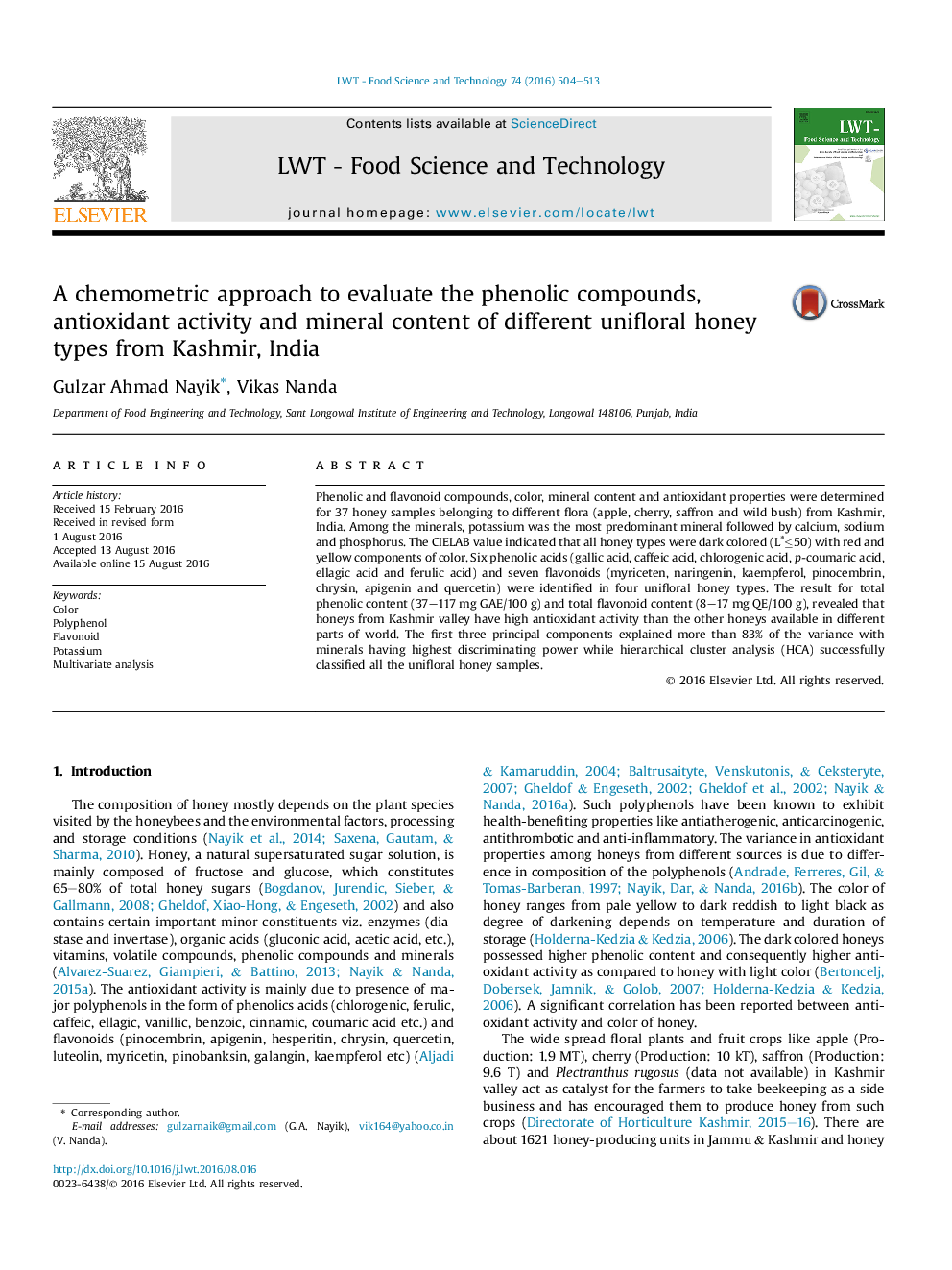| Article ID | Journal | Published Year | Pages | File Type |
|---|---|---|---|---|
| 4563488 | LWT - Food Science and Technology | 2016 | 10 Pages |
•The floral origin significantly affected the biochemical composition of honeys.•Discrimination of honeys from different floral origins was achieved by chemometrics.•Minerals were most influential variables responsible for discrimination.
Phenolic and flavonoid compounds, color, mineral content and antioxidant properties were determined for 37 honey samples belonging to different flora (apple, cherry, saffron and wild bush) from Kashmir, India. Among the minerals, potassium was the most predominant mineral followed by calcium, sodium and phosphorus. The CIELAB value indicated that all honey types were dark colored (L∗≤50) with red and yellow components of color. Six phenolic acids (gallic acid, caffeic acid, chlorogenic acid, p-coumaric acid, ellagic acid and ferulic acid) and seven flavonoids (myriceten, naringenin, kaempferol, pinocembrin, chrysin, apigenin and quercetin) were identified in four unifloral honey types. The result for total phenolic content (37–117 mg GAE/100 g) and total flavonoid content (8–17 mg QE/100 g), revealed that honeys from Kashmir valley have high antioxidant activity than the other honeys available in different parts of world. The first three principal components explained more than 83% of the variance with minerals having highest discriminating power while hierarchical cluster analysis (HCA) successfully classified all the unifloral honey samples.
